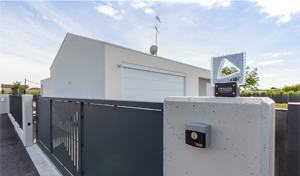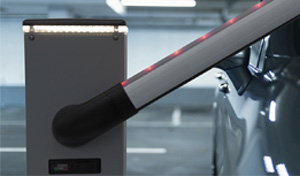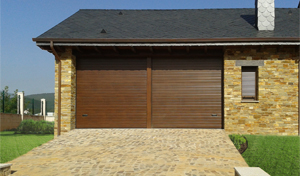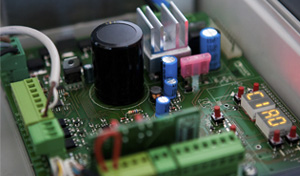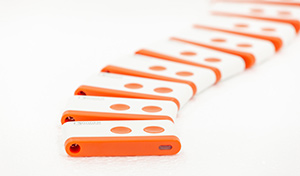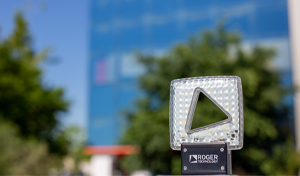THE ADVANTAGE OF DIGITAL CONNECTED WITH A SINGLE THREE-WIRE CABLE
Before we delve into the heart of the digital brushless motor, we should point out that brushless motors are derived in concept from DC motors designed to provide industrial-grade performance and with the main aim of doing away with the commutator and hence the brushes and all the issues that come with them.
These (and other reasons) are precisely why this technology is now being integrated and used in a major way in the industrial sectors of production process lines, in industrial robotics, in the automotive industry, IT and increasingly in the electrical appliance industry.
Having set the scene, let's now delve into the heart of this new technology and introduce you to its huge advantages.
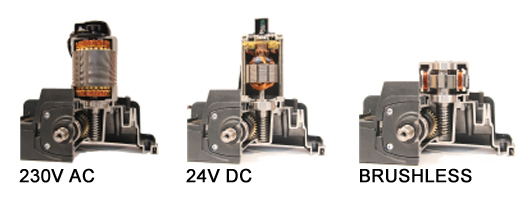
Permanent magnetic digital brushless motor.
The Roger Technology BRUSHLESS motor is a three-phase permanent magnetic digital synchronous motor
As the name suggests, a brushless motor is an electric motor designed to operate without brushes, which are the main culprits responsible for direct current (24V DC) motor problems, such as commutator wear, considerable abrasion while braking and reversing, sparks and even the motor catching fire. Unlike traditional 24V DC motors that use sintered ferrite magnets, the magnets used in the brushless rotor are "rare earth" neodymium iron boron magnets, which are not adversely affected by high temperatures, don't have condensation problems and, above all, love low temperatures: all of which are the main enemies of traditional 24V DC motors. In additional, another key factor is the special winding comprising concentrated coils powered by a three-phase sinusoidal power source, available in 24V AC and 36V AC low voltage versions, which make the motor extremely compact, amazingly strong and capable of running on extremely low power.
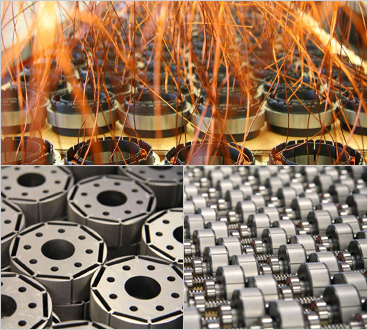
Permanent magnetic field.
Unlike induction motors, BRUSHLESS motor operation is based on a magnetic field controlled digitally based on the position of the rotor, generated by the current running in the three-phase system. Another major advantage in terms of ongoing motor performance lies in the special neodymium magnets, which - unlike other magnetic materials - have a service life of almost 300 years. These neodymium magnets, even working at prohibitive temperatures, allow the automation system to stand up to extremely intensive use. In addition, having a fully digital synchronous motor means constant torque can be delivered throughout the motor's travel while motor direction can be reversed instantaneously without it having to brak.
Ambient-temperature highly energy efficient motor
One thing you're sure to find astonishing is that the motor stays cool to the touch, regardless of intensive use. The motor's special geometry, the permanent magnetic field and the total absence of brushes actually combine to negate the motor's heat loss and hence wasted energy, however the automation system is being used. We've run extensive testing under extremely heavy-duty operating conditions and particularly demanding weather conditions. Tests consistently came back with a reading of less than 1 ampere draw for swing door/gate, barrier and sliding gate automation systems alike. Hence this motor qualifies as a highly energy efficient motor fit for extremely intensive use.
Advanced native encoder
And what if we told you that there is no encoder installed and connected in the brushless motor, hence no provision of wires for connection, but that you can control the motor as though there were 3 encoders working together, all just using a standard 3-wire cable?
Well, all this is possible with Roger Brushless as the digital brushless motor also acts as a highly advanced encoder, providing absolutely safe control of all the automation system's movements. It ensures elegant slow-down while opening and closing and provides the utmost control over obstacle detection and the relevant anti-crush safety device with a feature unique to this motor, namely keeping torque constant no matter what speed the automation system is running at, so that reversing is constant and immediate in full compliance with the safety regulations in force.
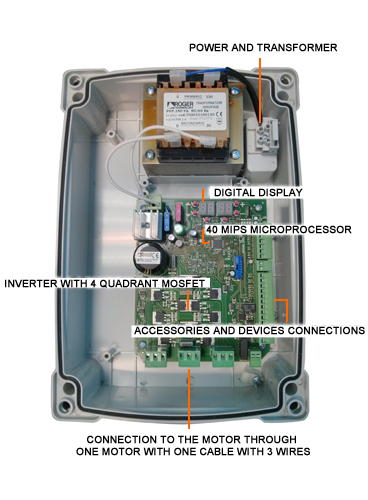
Total digital control
The Brushless control unit with on-board 24V or 36V DC field-oriented digital controller sports a refined, pared-back and strikingly innovative design.
With no need for traditional relays thanks to its revolutionary inverter with four-quadrant sinusoidal control, the new control unit is the latest generation in circuit boards devised to provide supremely safe control of automation system movements of all kinds to cater to the requirements of all installers and professionals working in residential, commercial and industrial sectors.
When we talk about digital controllers, we mean the motor is controlled 100% digitally, unlike with other motors where control is analogue only or traditionally relies entirely on the activation of relays.
What this means is that our advanced microprocessor running at 40 MIPS gets information on the motor's magnetic field in real time, processing all data in real time using SENSORLESS technology, monitoring, analysing and verifying the correctness of the data received. So in the end, we not only get control of an advanced motor encoder, we also have access to data on motor force, current demand, consumption and relevant positioning, whatever position the motor is in.
Connection to automation system via a 3-wire cable
Professional installers who have tried out Roger Brushless automation systems and are installing them are all in agreement that the simplicity of wiring and connecting the control unit to the motor gives this solution a huge advantage. Indeed, connecting the control unit and hence the digital controller couldn't be simpler, requiring the use of a single cable with just 3 wires. All the information monitored and controlled digitally using sensorless technology - such as information provided by the native encoder and other operating data - is transmitted by the motor to the control unit via the motor's cable, thus getting the most out of all the system's features but with the simplicity of connecting just one 3-wire cable.

SENSORLESS TECHNOLOGY
The electronic motor power controller employs highly sophisticated sensorless technology.
This technology allows the power controller to detect the exact position of the rotor without relying on sensors, instead measuring just the current drawn by the motor and the windings' return signals, called "back-EMF", which provide the information that defines our native encoder.
When we instead refer to our field-oriented digital controller, namely based on the principle of vector control, it means the controller - used for either asynchronous or synchronous motors - allows us to measure and control all dynamic characteristics of the magnetic field fluxes, whether inductive or exciting, integrating them together.
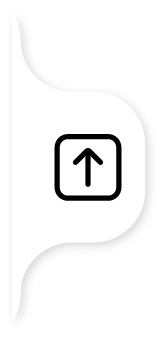


 Nederland
Nederland Italiano
Italiano Français
Français Deutsch
Deutsch Belgium
Belgium Português
Português Español
Español Polski
Polski